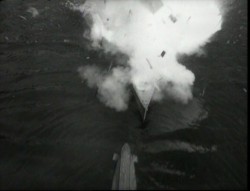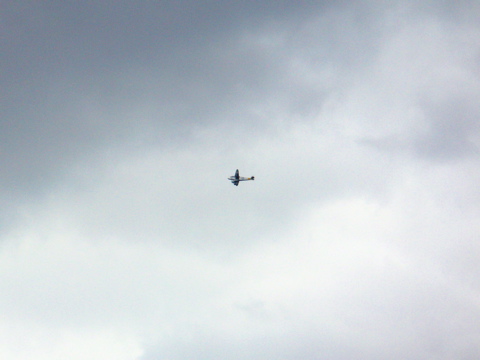- A flying machine is an aeroplane (qv).
- A dirigible balloon (or just dirigible) is an airship (qv).
- An aeroplane is the wing of a flying machine (qv).
- Airship collectively describes both flying machines and dirigible balloons (qqv).
Get it? (Got it.) Good!
Seriously, I’m glad the meanings of these words were rationalised within a few years: what a head-ache it would be to have constantly qualify them all through my thesis!
Sources: R.P. Hearne, Aerial Warfare (London and New York: John Lane,
1909); Fred T. Jane, ed, All the World’s Air-ships (Flying Annual)
(London: Sampson Low, Marston & Co., 1909).
![]() This work is licensed under a Creative Commons Attribution-NonCommercial-NoDerivatives 4.0 International License.
Permissions beyond the scope of this license may be available at http://airminded.org/copyright/.
This work is licensed under a Creative Commons Attribution-NonCommercial-NoDerivatives 4.0 International License.
Permissions beyond the scope of this license may be available at http://airminded.org/copyright/.





Brett, can i read your tesis as my reference?
Unfortunately I’m still writing it! Come back early next year …
errrr … an aeroplane is the wing of an aeroplane?
LOL, sorry — I think I intended this post to be deliberately confusing. (Nobody read the blog back then so it probably didn’t seem to matter!) My point was that the terminology was inconsistent at this point in time and that relying on the definitions of even a few years later might lead one astray. Having said that, aeroplane does generally mean ‘aeroplane’ in most works of this period; using it to mean ‘wing’ may have been a peculiarity of Hiram Maxim, who wrote the introduction to Hearne’s book and was of the pre-Wright generation of aviation experimenters. Hearne himself used it in the later sense.
I think George Cayley used it to mean wing – I assume it’s from ‘plane surface’, and possibly ‘inclined plane’.
Thanks! Could well be — I must confess to not having read my Cayley! The OED has the first cite for aeroplane in this sense is from 1866, by F. H. Wenham (the inventor of the wind tunnel): ‘In the flying mechanism of beetles..when the..wing-cases are opened, they are checked by a stop, which sets them at a fixed angle. It is probable that these serve as ‘aeroplanes’, for carrying the weight of the insect.’ 1st Ann. Rep. Aëronaut. Soc. 33 (I didn’t realise that the RAeS originally had the diaresis in its name … I wonder if there’s such a thing as a steampunk diaresis, to go with the heavy metal umlaut?)
Octave Chanute, Gertrude Bacon and F. W. Lanchester are also cited, among others. Last cite from 1910, by Richard Ferris. There’s also the following note:
A quick browse through Gibbs-Smith suggests that Cayley talked about measuring the lift and drag on ‘inclined planes’, but doesn’t seem to use ‘aeroplane’ itself.
From “Early Flying Machine”, a Camden reprint (2003) of exerpts from “Engineering Wonders of the World”, (Nelson, c.1909)
“In the present article, the term flying machine is synonymous with aeroplane. “Aeroplane” is not a happy term in itself, because planes seldom form part of a flying machine, whereas the curved or cambered deck is always used, at least for the main sustaining surfaces”
“It was proved conclusively that (a) a true plane had not, area for area, so great a sustaining power as a slightly curved surface, convex on the upper side. Horatio Phillips, and subsequently Maxim demonstrated by elaborate tests that (b) an aeroplane (we here apply the term to a sustaining surface, not to a machine)……. was most efficient”
Another interesting usage:- “Bleriot, Latham, and others have chosen the alternative of the monoplane, having a single deck subdivided into two wings, one on each side of a central “body”.”
Thanks!
Very interesting. Reading this made me think of riding in my parents’ car as a child, hand out the window “aero-planing” in the wind-blast. And of course the remarkable (true?) tale of the one-winged F-15.
http://www.youtube.com/watch?v=slLKmtIKccs